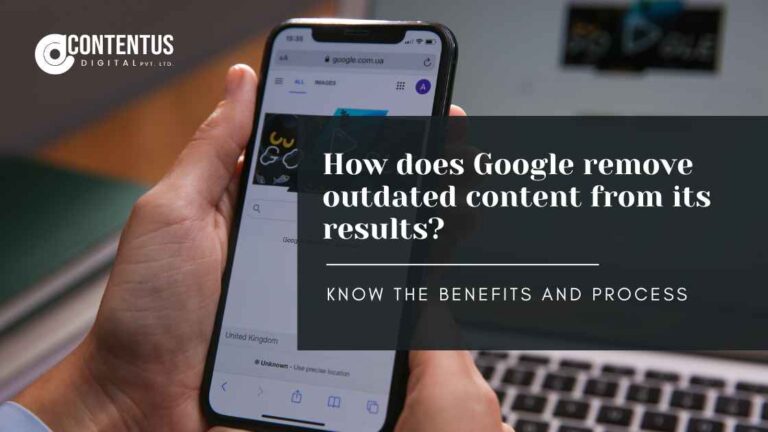The top 10 Google ranking factors
Table of content
1 | Introduction |
2 | Top 10 impactful Google ranking factors |
3 | Conclusion |
Do you need help to get a good rank on SERP? Don’t worry. This blog will guide you through the top 10 Google ranking factors that will help your site stand out! You already know that search engine optimisation (SEO) makes your content appear to the right audience at the right time. But Google’s algorithm is constantly evolving. As a result, SEO is changing too. For these, you need to know about Google’s ranking factors, which align your content with the latest SEO.
Though there are 200+ Google ranking factors, here you learn the best and most impactful factors.
Top 10 impactful Google ranking factors
The ranking factors are divided into three categories – on-page ranking factors, off-page ranking factors, and technical ranking factors.
On-page Google ranking factors
- Quality content
The quality of the content is the most significant Google ranking factor. Standard content must be unique and engaging and provide the proper knowledge about a topic from a specific subject. Let’s see how to generate quality content –
- Uniqueness: Quality content must deliver unique, valuable, and insightful information you can’t find anywhere else. Plus, the content should incorporate relevant and impactful visual elements. It makes your content more accurate and valuable.
- Relevancy: Then, you need to consider the level and style of your targeted audience. You must create content based on your audience’s understanding level, requirements, niche, and demographics.
- Content structure: Defining a clear structure for your content is essential. You should organise your content with proper titles, headers, paragraphs, and bullet points. If it becomes easy for your readers to read the content, it will be easy for the crawlers to scan it. Also, you should use the HTML elements to create a sustainable structure for your content.
2. E-E-A-T: Experience, Expertise, Authoritativeness, and Trustworthiness
Google evaluates the page rank of your content as per the E-E-A-T guidelines. These guidelines need proper experience and expertise to create quality content. It would help to have an appropriate educational background, degree, certificates, and practical knowledge about the industry/products you’re writing about. Then comes authoritativeness. Authoritativeness indicates a reliable source. Your content should meet the proper quality, quantity, and reliable backlinks.
Finally, your content should be trustworthy. Trustworthiness comes from the above three factors – experience, expertise, and authoritativeness. Your website must not include any harmful content which decreases your reputation. Thus, your content should be accurate, reliable, secure, and up-to-date. Moreover, it would help if you included the relevant credentials and certifications on your site.
3. Length of your content
First, there is no rule about any content’s word count or length. It varies based on factors like client requirements, depth of the topic, and more. According to Search Engine Journal, the ideal word count for content should be at least 250.
A study of Yoast in 2022 reveals a relationship between content length and Google rank. Yoast recommends that when creating regular posts or pages, the content should be 300 or above, the taxonomy page should be 250 or above, the regular content must include 900 or more words, and the product description should be 200 or above.
Moreover, the success of considering the content length as a Google ranking factor is measured through these –
- Lengthy content generates more links.
- The higher the number of links, the better your content will rank and generate organic traffic.
But pay attention to the behaviour of your readers when creating content. 55% of readers consume content for 15 seconds or less. So, you need to deliver a resonating message within a shorter time frame. So, avoid unnecessary length for content. Instead, write whichever is suitable.
4. Keyword usage
One of the most significant Google ranking factors is the keyword. It’s an on-page SEO that helps you understand users’ search intent. You need to add the long tail and semantic keywords.
Remember to use your primary keywords in the title tag, headers, and meta description. Also, append the keywords naturally in the content body. Specifically, you need to add the primary keywords within the first 100 words. But don’t use keyword clustering. Make a fair usage strategy of targeted and semantic keywords.
You can find the semantic terms in Google’s ‘related search’ section. Otherwise, you can use Google’s semantic search.
5. Image optimisation
The search engine bots prioritise the pages with relevant images to provide better index and page rank. So, let’s see what should be your on-page SEO checklist for higher rank-
- When you add a visual to your content, ensure you have added an altered text. The alter texts help the crawlers understand what the image is about, and they can better assess your content. As a result, there will be a high chance of acquiring a better rank. But your alter text should be short. So remember to add the keywords within it. Additionally, the altered texts make your site accessible to visually impaired people.
- Keeping your image file size within 70-100 KB is better. Also, it will be better to save your files in JPG format.
- Moreover, you should avoid stock photos and graphics. Instead, use images, screenshots, infographics, etc., from a credible source.
Technical Google ranking factors
6. Mobile friendliness
Google had already told us to create mobile-first indexing for the new website. That means nowadays, Google assesses the ranking of content based on the mobile version of a site instead of the desktop version. In 2020, Google mandated all the sites to obey the mobile-first indexing approach. So, if you have a top-notch desktop version of your site but no mobile version, your Google rank will be dropped. These are some essential checklists for mobile usability and friendliness-
- All the interactive elements should be significant, feasible, and placed in the proper space.
- The UI should be interactive and deliver a positive experience.
- Use readable texts with appropriate fonts and sizes.
- The mobile version must have easy navigation and responsive design.
- It can be accessible to all users, including physically disabled people.
But don’t worry! Most of the CMS will allow you to check the previews of the mobile version of your site. Additionally, you can check the feasibility of the site through Google’s Mobile-Friendly Test.
7. Page speed
Your web page’s speed is considered a vital Google ranking factor. The ideal page speed for page rank is 3s or less. The bounce rate will be high if your pages take more time than 3s. As a result, your rank will be decreased. Thus, you must check your page speed using PageSpeed Insights.
8. Website interlink architecture
Ensure that every page of your site is accessible through 3 or less clicks. To do this, your site must have a proper interlinking structure. A flawless interlinking structure assists search engines in quickly accessing your site and finding what they are searching for. That’s why you should carefully interlink whenever you create a new page or content. Also, this Google ranking factor helps readers easily navigate from one page to another.
Apart from these, you should check if there are any broken links, 404 errors, or redirect loops within your site every two months. For this reason, you must conduct a technical SEO audit.
9. Security
Security is the utmost priority of Google. The Official Google Search Central Blog mentioned that brands should use industry-standard security like HTTPS encryption. You will get the SSL (Secure Socket Layer) certificate if you have integrated this security for your site. However, you will not get the SSL certificate if you use old HTTP security. In that case, you have to upgrade your security to HTTPS.
Off-page Google ranking factor
10. Backlinks
Backlinks are links that come from another website and prove your site’s credibility. If your page has lots of backlinks, then Google considers it for a high ranking. The more backlinks you get from the high authority domains, the higher your chances of getting a good rank are. So, it would be best if you took these measurements to get high-quality backlinks –
- Ensure the backlinks come from high-quality, authoritative, and trustworthy domains.
- Use a blend of different TLDs, anchors, and types of links.
- Take proper precautions to ensure security and avoid spam penalties. Thus, you need to label the link with commercial intent.
Conclusion
To optimise your content SEO, you need to get a good page rank from Google. The core of the Google search algorithm is based upon the Google ranking factors. As a result, the users get high-value content. So, by understanding the ranking factors, you can determine which areas of your site are vital and which areas need more attention.








I love the actionable steps you’ve included; it makes implementing your advice easier.
Your blog brightens my day like a ray of sunshine. Thank you for spreading positivity through your words.